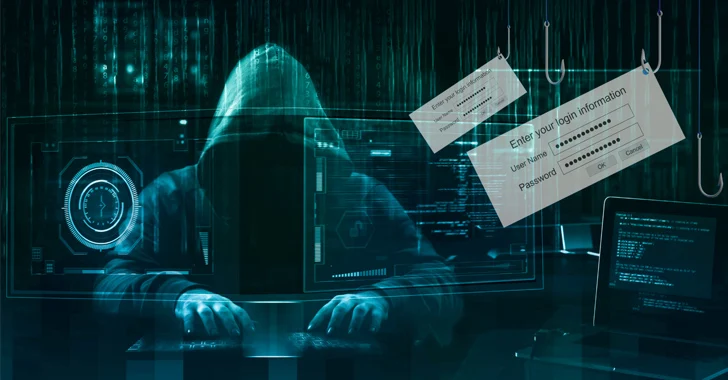Tanzania has experienced a significant rise in cybercrime, with phishing a prominent threat. Phishing attacks deceive individuals into divulging sensitive information, such as usernames, passwords, and credit card details. We explore Tanzania’s growing phishing problem, delving into the tactics employed by hackers, the impact on individuals and organizations, and actionable steps to mitigate this threat and protect users’ credentials.
Understanding Phishing
So, What is Phishing? This cybercrime technique relies on deceptive tactics to trick individuals into revealing their personal information. It typically involves fraudulent emails, websites, or messages that impersonate legitimate entities, such as banks, social media platforms, or government agencies, to gain the victims’ trust and extract sensitive data.
There are various types of phishing attacks, including email, spear, and pharming. Email phishing involves sending mass emails impersonating reputable organizations while spear phishing targets specific individuals or organizations. Pharming involves redirecting users to fake websites through malicious codes or compromised DNS servers.
Increasing Internet Penetration: Tanzania has witnessed rapid growth in internet connectivity, enabling more people to access online platforms and increasing the pool of potential phishing victims. With internet penetration expanding, cybercriminals have a larger target audience, making phishing more attractive for stealing sensitive information.
A lack of awareness about cybersecurity practices, including phishing prevention measures, contributes to the success of these attacks. Many users in Tanzania may not be familiar with identifying phishing attempts or understanding the potential risks of sharing sensitive information online.
These attacks are financially motivated, and Tanzania’s growing economy presents lucrative opportunities for cybercriminals. The theft of sensitive user data, including banking credentials, credit card details, and personal information, can yield substantial profits in the underground market.
The attacks can lead to significant financial losses for individuals who fall victim to the scam. Stolen credentials can be used to access bank accounts, make fraudulent purchases, or even facilitate identity theft, leading to long-term financial repercussions.
Organizations that become targets of phishing attacks may suffer reputational damage. If users fall victim to these attempts from a compromised organization, public trust can be eroded, impacting customer relationships and potentially leading to legal consequences.
Combating Phishing Attacks
Emphasizing the importance of cybersecurity education and awareness is crucial in mitigating the attacks. Organizing workshops, training sessions, and awareness campaigns to educate individuals and organizations about standard phishing techniques, red flags, and best practices can significantly reduce the success rates of these attacks.
Implementing Strong Authentication Measures: Requiring users to implement multi-factor authentication, such as using a combination of passwords, biometrics, and one-time codes, adds an extra layer of security, making it more difficult for hackers to access sensitive information even if credentials are compromised.
Robust Email and Web Filtering: Employing effective email and web filtering systems can help flag and block suspicious emails or websites that are known to be associated with these attacks. Advanced algorithms and machine learning techniques can enhance the accuracy of detecting and blocking phishing attempts.
Regular Security Updates and Patching: Keeping software, operating systems, and applications up to date with the latest security patches is essential in preventing cyber attacks. Regular updates help close vulnerabilities that hackers may exploit, reducing the chances of successful phishing attempts.
Incident Response and Reporting Mechanisms: Establishing robust incident response protocols and mechanisms for reporting the attacks enables quick identification and mitigation of potential security breaches. Organizations should encourage users to report suspicious emails or websites to facilitate timely intervention and enhance overall cybersecurity.
Collaboration and Legislation
Public-Private Collaboration: Collaboration between government entities, cybersecurity organizations, and private sector stakeholders is crucial in addressing the phishing problem in Tanzania. Sharing information, resources, and best practices among these entities can foster a unified and coordinated response to cyber threats.
Strengthening Legislation and Enforcement: The Tanzanian government should enact and enforce robust laws and regulations about cybercrime, including phishing. Stringent penalties for offenders can act as a deterrent and discourage cybercriminals from engaging in activities. Additionally, authorities should be equipped with the necessary resources and expertise to investigate and prosecute cybercriminals effectively.
Tanzania’s growing problem poses a significant threat to individuals, organizations, and the nation’s cybersecurity landscape. Understanding the nature of these attacks, raising awareness, implementing security measures, and fostering collaboration are crucial steps in mitigating this threat.
By adopting proactive approaches, engaging in public-private partnerships, and strengthening legislation, Tanzania can strive towards a secure digital environment that safeguards users’ credentials and protects against these attacks.

